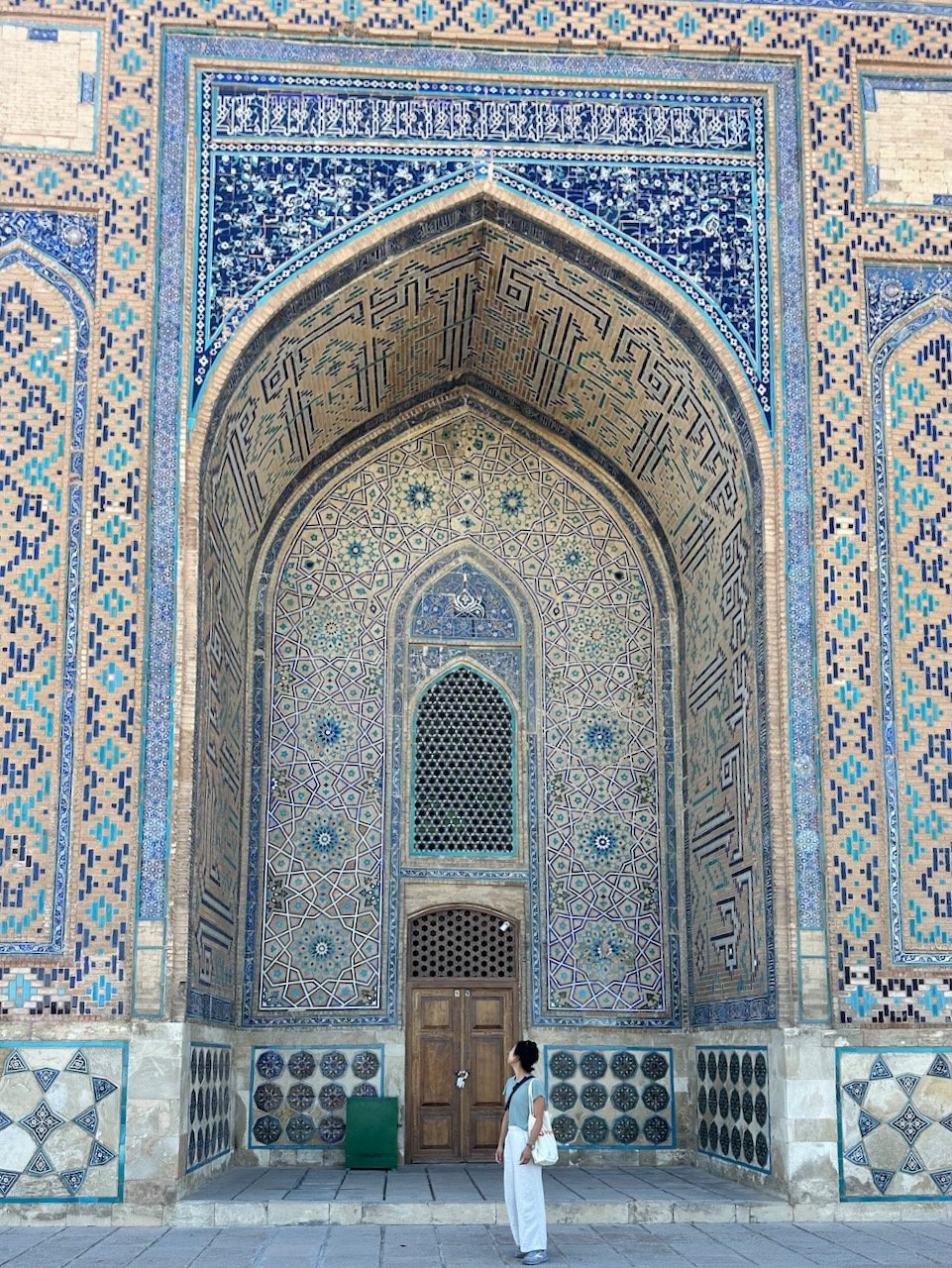Postcards from Turkestan
I’ll let the photos do the talking for a bit because the architecture is pure art.
These photos are of the mausoleum of Khoja Ahmed Yasawi, which is the main attraction of Turkestan, a town ~2hrs northwest of Shymkent. It is a UNESCO World Heritage Site because of its authentic and outstanding example of Islamic religious architecture. I loved the shades of blue and the intricacy of the tile work - it was beautiful in the morning sunlight.
A quick overview:
Khoja Ahmed Yasawi was a distinguished Sufi leader during the 12th century. Sufism is a mystic religious practice of Islam. He had a significant influence in spreading Islam in Central Asia and consequently is regarded as a spiritual teacher. He isalso well-regarded as a poet. When he was 63 he dug himself an underground cellar to live out the rest of his life.
The mausoleum was built by Amir Timur, a ruthless conquerer of Central Asia during the 13th century, after he had a prophetic dream where Yasawi predicted a successful military campaign. As a result, Timur visited the grave of Yasawi and ordered the construction of the mausoleum.
A bit more on Timur, also known as Tamerlane. He was a Turkic conquerer who founded the Timurid empire in the 14th century. He was a powerful ruler descended from a Mongol tribe and who saw himself as Genghis Khan’s heir (Genghis Khan lived during the 13th century). Depending where you go, you’ll hear different versions of who he was. In Central Asia he is seen as a great warlord and leader, but outside of that region he can be viewed as a mass murderer who was ruthless in his campaign to create an empire.
Here are some more photos from my day trip to Turkestan, although I didn’t see much given that it was so hot. Turkestan is one of the more recognized tourist destinations in Kazakhstan because of the mausoleum and has been named the spiritual capital of the Turkic world, also because of the mausoleum. You can click on each photo for more info.











